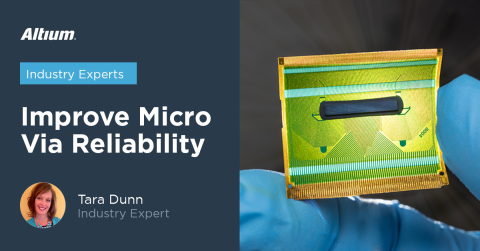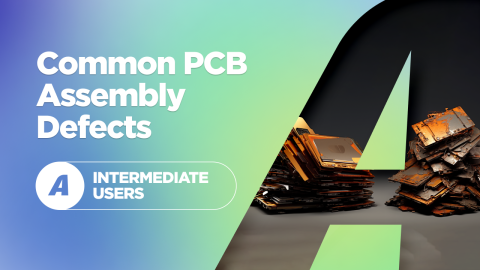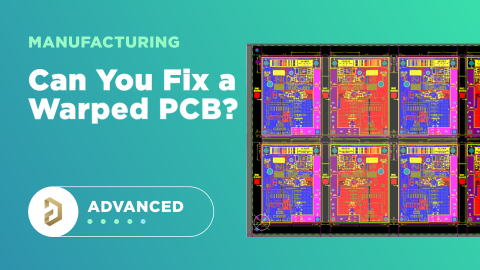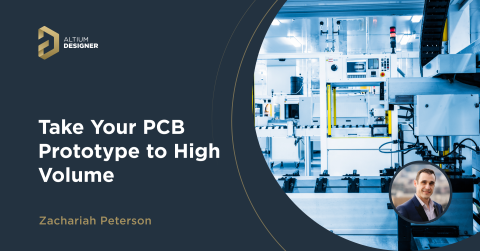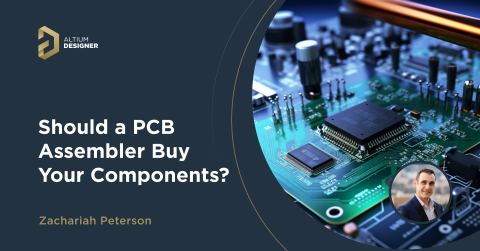Should You Manufacture Your First PCB Prototype Locally?

A PCB prototype isn't just a test device; even prototypes can be very revealing of intellectual property (IP). PCB prototypes give a glimpse of your product's intended functionality. Even minor details like the materials used for fabrication or the circuit board layer stack construction can be clues to a product's end-use application. The bill of materials (BOM) can provide more clues to a product's end-use application, especially if certain specialty components are used in the design.
When it is time to send a PCB prototype out for fabrication and assembly, should you keep it local or shop for a better value globally? While most overseas manufacturers are honest and don't pilfer customer IP, there are occasional horror stories where an overseas PCB prototype manufacturer reverse engineers a knockoff product from a customer's data.
Obviously, you have to determine the level of risk you are willing to tolerate and shop around for a decent PCB prototype manufacturer. However, with some simple data dissemination protocols, your company can protect itself even if you produce boards overseas. Here are some tips on how to proceed in this article.
Your PCB Design Outputs Are Your True IP
If you ask some designers, they might view their native PCB design files as the core of their product's IP. The reality is quite different: the entire point of PCB design software is to create parts of your product IP that will eventually be manufactured. There are several important elements that collectively make up your product IP:
- An engineering specification
- Exported fabrication and assembly files
- The bill of materials (BOM) for the PCBA
- Firmware or software source code
- Finalized schematics for each project variant
Note that a PCB layout file doesn't appear anywhere in this list. As some readers may know, it is possible to reverse engineer a PCB layout file into a native format using the above list of product data. If someone manages to do that, not only do they have your production data, but now they can also modify the original design.
Now on to the $64,000 question: when procuring PCB prototypes in manufacturing, should you send your data package out globally or locally? In some instances, such as the production of export-controlled devices, you will be required to keep everything local. Depending on the components and the number of boards in your product, some portions could be sent out to an overseas manufacturer without compromising your product's IP.
Advantages of Staying Local
Companies that want to remain competitive over the long term need to have a robust IP strategy, but there are additional benefits to keeping prototyping local beyond IP protection. Prototyping with an onshore company generally carries higher costs, so overseas production is often seen as a big cost advantage. However, keeping your PCB prototype manufacturing local brings additional benefits that can be worth the higher cost.
- NDAs and contracts are more easily enforced - If someone doesn’t live up to their contract obligations, it’s much easier to seek relief when both parties are in the same locality.
- The producer is in/near your time zone - When the customer and manufacturer are on other sides of the globe, someone might end up having to make an emergency 2 AM phone call. Emails will always have a longer delay as well, and this can slow down issue resolution.
- Eliminate customs holds and tariffs - A supreme source of annoyance is having your PCBA order get held up in customs. If this happens, the wait time can be unpredictable and you may have to pay a fee to release the package to its destination.
- No language barrier - A language barrier can cause simple miscommunications that lead to a completely failed prototyping run. Producing locally eliminates this problem.
- You can inspect the facility - If you’re unsure of the reliability of your manufacturing partner, it’s a lot easier to visit their facility if you don’t have to travel very far.
Take a look at this article on the major cost drivers of PCB manufacturing, and you'll find that the one missing piece is component cost and labor. Component cost could be higher when producing overseas due to shipping, taxes, and tariffs, but this is greatly offset by the labor cost. This helps keep overseas electronics production competitive, even if you're just producing a few PCB prototypes.
If You Choose Overseas Production…
If you decide to go overseas, be careful about whom you send your product's data to. To get something fabricated and assembled, you have to send out the data package, but each party in the process does not always need the entire data package. For example:
- Engineering specifications are never sent out to anyone outside the company other than an end client.
- Schematics are never sent out as they are not needed for PCB manufacturing; these are treated the same as engineering specifications.
- PCB fabrication houses don't need the BOM, pick and place files, or assembly drawings.
- PCB assembly houses don't need the Gerbers or drill data; when they do need it, they will only need the surface layers.
- Anything else needed for fabrication, such as mechanicals/packaging and product assembly order, should be sent to yet a different fabricator.
Taking this approach with PCB production data splits up the data package among multiple parties who may have no knowledge of each other. IP is being protected through obfuscation. You can also outsource only portions of the process to an overseas vendor, such as bare board fabrication and sheet metal fabrication, while final assembly and packaging are kept in-house.
Whether you need to build reliable power electronics or advanced digital systems, use the complete set of PCB design features and world-class CAD tools in Altium Designer®. To implement collaboration in today’s cross-disciplinary environment, innovative companies are using the Altium 365 platform to easily and securely share design data and put projects into PCB prototype manufacturing.
We have only scratched the surface of what’s possible with Altium Designer on Altium 365. Start your free trial of Altium Designer + Altium 365 today.


